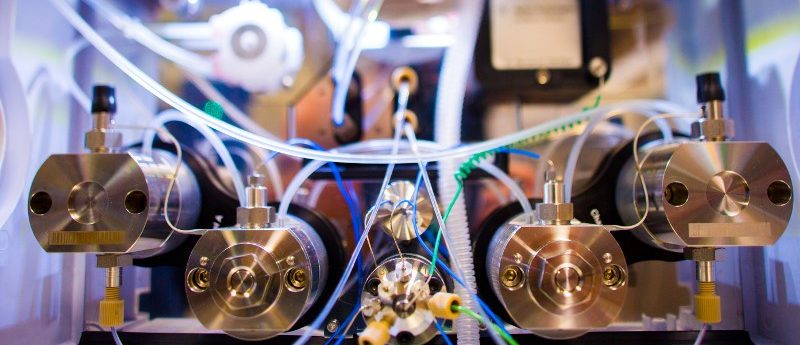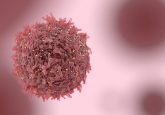Wireless nitric oxide monitoring with new flexible and physically transient electrochemical sensor

Long-lasting materials are not always optimal and the development of transient electronic devices with pre-defined life cycle represents a highly promising area for innovative research and development. Aside of the general advantage of being environmentally friendly, particularly in the area of health- and healthcare-technology such technologies might be, for example, of a high value for the development of implantable electronics that do not require later removal.
New study published in Nature Communications reports the development of a wireless, flexible, and physically transient electrochemical sensor for nitric oxide (NO) detection, with numerous potential future applications in healthcare procedures and health-related monitoring. We interviewed the leading author of this work Dr Lan Yin (Tsinghua University, Beijing, China) to get insights on the background, significance and potential future applications of this promising new sensor.
Can you shortly present yourself to our audience?
Dr Yin: I am an associate professor from the School of Materials Science and Engineering at Tsinghua University. I started my own independent research group at Tsinghua around 5 years ago. Our research interests are focused on biodegradable materials for bioelectronics.
Why it is of interest to monitor NO and what were the existing challenges that your work aimed to address?
Dr Yin: Most people probably get to know NO in relation to air pollutants from cars or factories, but a tiny amount of NO plays an important role in neurotransmission, immune/inflammation responses, cardiovascular systems, etc. For example, chondrocytes in osteoarthritis patients are associated with enhanced NO generation, which promotes inflammatory responses, chondrocyte apoptosis and cartilage degradation. Therefore, probing real-time detection of NO in biological systems could be of great importance for early intervention, treatment optimization and postsurgical monitoring. Conventional colorimetric techniques for detecting NO such as Griess assays suffer from insufficient detection limits and do not represent a real-time measurement. By contrast, electrochemical sensors can offer fast and continuous NO detection with high sensitivities and low detection limits. However, existing electrochemical NO sensors are made of rigid and nondegradable materials and require surgical retrieval after usage, which could cause potential infection. To address these challenges, we proposed flexible and physically transient NO sensor that allows real-time detection of NO in biological environments and does not need surgical retrieval after usage.
How challenging was the work on the development and validation of the NO sensor? Were there some steps that proved to be especially difficult or unexpectedly easy?
Dr Yin: For a flexible and physically transient NO sensor, the key challenge is to achieve biodegradability and stable performance at the same time, which has not been demonstrated before. Material strategies for electrodes and selective membranes are crucial. Ideally, we would prefer ultra-thin sensing materials with excellent sensing performance, to minimize materials to be degraded in biological environments. Choosing a ultra-thin selective membrane that has excellent selectivity to NO turns out to be the most time-consuming step. Poly(eugenol) turns out to be the material that satisfies our requirements. With only a few tens of nanometers, poly(eugenol) demonstrates great biocompatibility and selectivity towards interfering chemicals.
What are the strengths of the newly developed NO sensor and are there some down sides of using it? How does it compare to other existing methods for measurement of NO?
Dr Yin: The advantages of the newly developed sensor are that the sensors are flexible, which matches the mechanics of biological tissues and they are physically transient, which eliminates secondary surgeries for device retrieval after it is implanted. Some down sides would be it has a stable operational lifetime of around 7 days for the current sensor. To prolong stable operation, the selective membrane materials would need to be further optimized. Conventional colorimetric techniques such as Griess assays have limited sensitivity and they do not have real-time sensing capability. Existing electrochemical sensors can offer continuous NO detection, but they are made of rigid materials and require surgical retrieval of the device after implantation. Compared to these methods, the currently developed sensor is flexible and physically transient, and can be wirelessly operated for real-time NO detection, with a low detection limit, a wide sensing range and excellent anti-interference characteristics.
What are the most important potential future applications of the new sensor?
Dr Yin: The new sensor offers stable sensing characteristics and is capable of physical transience after usage. We demonstrated its capability of establishing a link between NO concentrations and inflammation responses in the joint cavity. It could be used as implantable sensing platform to offer essential information for treatments optimization and postsurgical monitoring of osteoarthritis.
What are your further work directions?
Dr Yin: Our further work includes further miniaturization of the NO sensor with wireless module to achieve fully implantable, physically transient and miniaturized sensing platform. Investigation of diverse selective membrane could also enable flexible and degradable sensors for other important chemicals in the body, such as glucose, dopamine, etc. In addition, fabricated miniaturized NO sensor arrays can provide mapping capability of NO distributions in biological systems.
Considering the overall recent scientific and technological advances, what are your forecasts for future developments and applications in this area?
Dr Yin: Moving forward, miniaturized, degradable and fully implantable chemical sensors with wireless communication capability can be achieved. Considering diverse demands in electronic medicine, these chemical sensors could be integrated with other devices, such as microfluidic channels and electrical stimulators to achieve multifunctional physiological monitoring and modulation, providing essential diagnostic and therapeutic tools for healthcare.
For our readers who are interested to learn more about the discussed topics – would you like to recommend some valuable sources for obtaining further information?
Dr Yin: For more information, please refer to our paper: Li R, Qi H, Ma Y, et al. A flexible and physically transient electrochemical sensor for real-time wireless nitric oxide monitoring. Nat. Commun. 11, 3207 (2020).
For transient electronics in general, please refer to a recent special issue on MRS Bulletin:
Transient Electronic Devices, MRS Bulletin, Volume 45 – Issue 2 – February 2020
Interviewer: Atanas G Atanasov, research leader focusing on molecular medicine and digital health, PI of LBIDHPS, Editor-in-Chief of CRBIOTECH, and Executive Administrator of the open innovation platforms DHPSP and INPST. Social media contacts: Twitter, LinkedIn, Facebook.
The opinions expressed in this feature are those of the author and do not necessarily reflect the views of Bioanalysis Zone or Future Science Group.





